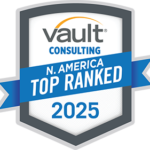These ideas are condensed from Episode 6 of the Level5 Strategy Lounge Podcast, “Exploring the Solutions to Produce Engaging Strategies for Canadian Regulators”,featuring Managing Partners Claude Ricks and Efram Lebovits, former Manager Garnet Tosswill, and Lesley Gallinger, currently the President & CEO of the Independent Electricity System Operator (IESO) and past Chief Strategy and Financial Officer for the Electrical Safety Authority (ESA).
The Electrical Safety Authority (ESA) was concluding a very successful 10-year run on their strategy plan which had been grounded in a risk-based approach to regulating electrical safety for Ontario residents. The plan had very impressively reached the goal of essentially zero fatalities or serious injuries from electrical incidents.
The challenge the ESA now faced, was how to continue to be a relevant force for electrical public safety and continue to grow its impact in this heavily regulated environment.
Strategic planning in a heavily regulated environment can be especially complex due to numerous constraints and limited flexibility. Nonetheless, it is possible to make the journey creative and unleash the energy of the organization.
This was the goal when the ESA partnered with Level5 to help them build a new vision and strategic plan for the organization.
“We had previously used a very top-down approach to building strategy on the executive and the board. And we’d also understood that our organization was not always with us along for the journey. So, we wanted to look for a different approach, because for what we wanted to do, we knew we needed the organization to be with us on this journey,” reflects Lesley, who was the Chief Strategy and Financial Officer of the ESA at the time.
As Claude and Efram discussed the framework and approach that Level5 successfully used with the ESA, these guiding lessons surfaced from the discussion and analysis.
Invest in leadership alignment
“What became pretty apparent was that the two groups, the board and the executive team, were on slightly different pages. And what became obvious is that we needed to make sure that we grounded both groups. Our first priority was making sure that the executive team and the board of ESA were in the same place, and we were able to walk them together into developing the strategy.” shared Efram.
As Lesley shared, the process can be a intellectually and strategically very engaging for the leadership team.
“We had several one- or two-hour sessions where Level5 really peppered us with questions,” laughed Lesley. “We just had to bring our brains to the meetings and we didn’t have to do a lot of work ahead of time. It was great, it felt like a very comfortable conversation. It allowed us to point out issues that had been buried within the executive team in a natural and conversational way.”
The front-end time investments helped create a successful outcome.
“With the ESA, everybody through the executive team, the senior leadership team, and right down to the subject matter experts had their fingerprints on the strategy,” says Claude, “which subsequently gave us a huge collateral benefit in the form of change management.”
Get the facts
“At the root of all our strategy development are facts.” explains Claude. “And so, we worked with the ESA executive team and board to agree on that fact base, and we would leverage this as the root of all strategy development moving forward. We wanted to make sure that we weren’t developing any strategic decisions based on gut feels – either we had to get fields from the board or get fields from the executive. It was essential that we were rooted in facts.”
Leverage the process
The process of fact gathering with the executive team and board also became a means of addressing the disconnect identified between the ESA leadership team and board. Level5 used interactive workshops as a way to understand the issues and concerns causing tension. The process also became a means of also gaining active permission to the take next steps to articulate what this strategy might look like.
“This was a very unique experience for our organization.” comments Lesley. “It was during the workshops that we surfaced differences and worked through them. The process really allowed us to have clarity as to where the organization wanted to go with the strategy, and it gave us a common platform to move forward and write our next chapter narrative.”
The narrative architecture
“We follow a definite process at Level5 which is that based on all the facts that we gather; we lay out the issues for the organization and literally map them to show where “the heat” is in the organization. This allowed us to move into some scenario planning. For the ESA, that scenario planning led us to some great group conversations where we were able to say: based on these scenarios, what does the ESA want to accomplish? And to achieve that, what would we want ESA to look like?” says Claude.
“The narrative is a description of what we want to be like at the end of our strategic cycle. What do we want to look like? It’s not all the details, and it’s not the strategic plan itself. It’s the what the how the strategic plan would come afterwards.”
“The words ‘strategy’ and ‘plan’ are intimidating. There’s a lot of baggage, and a lot of ‘I really can’t be open and honest’. A narrative, we typically say, is a story. It is a conversation. And by asking a series of very innocuous but smart questions, we are able to weave a storyline; unlock the creativity and really helps the team describe the end game, and in words and phrases that everyone understands.”
Get cross functional engagement
As Lesley described in the past, strategic planning at the ESA had been directed from the executive group towards the broader organization, as opposed to involving the entire organization from the ground up. “It was more of a “tada” conversation with the organization, meaning it was us saying ‘here it is, look at what we’ve created.'” says Lesley. “This time, the responsibility shifted from the executive team and the board, to the next level of our senior management team, and right down to the subject matter experts.”
“The narrative itself is an alignment tool. But then once the narrative is done, what we did and what we would typically do is look for permission.” Efram says. “Now I’ve used that word a couple of times and it’s not by accident, we literally look for head nodding and granting permission because that helps create alignment, what we’re trying to build in a strategy or in a strategic plan itself.”
Start planning for the next round
“One other way this process was different than how we had approached strategic planning in the past was the notion of purposefully preparing for our next plan. It was what we called the T-minus one year. We did this plan a year early to allow us to have what we call the T-minus one year or ramp up.”
“This was one of the major speaking points with the board. At first, they asked ‘why are you doing this so early?’ But for us, given the nature of change embedded in this plan, and the importance of getting the organization off the ground on the first day of the plan, and not halfway through having our plan to 95% and having a clear year to prepare our organization from a capability perspective, and from a structure perspective allowed us to hit the ground running on day one of the plan and implement with an increased level of focus.”





